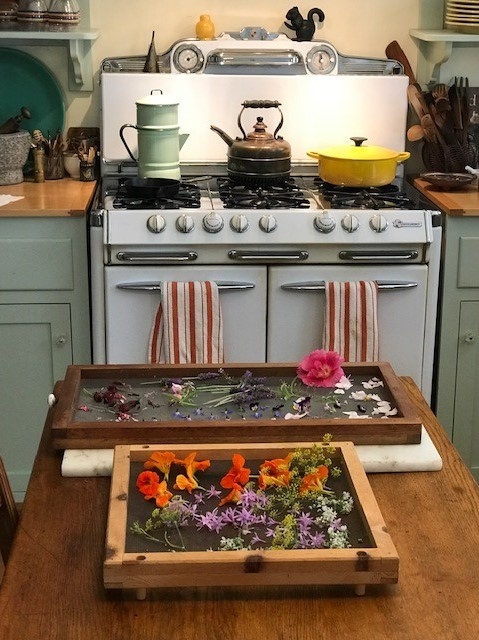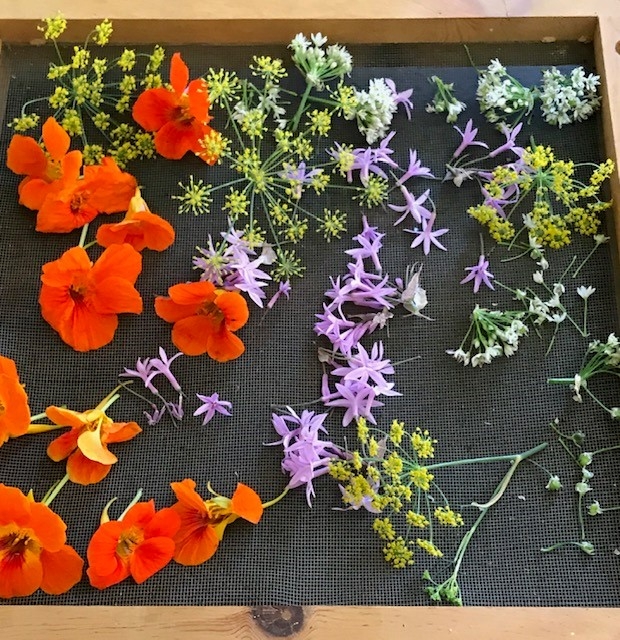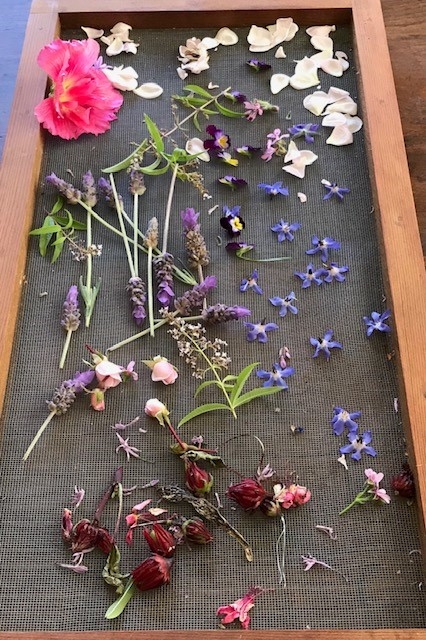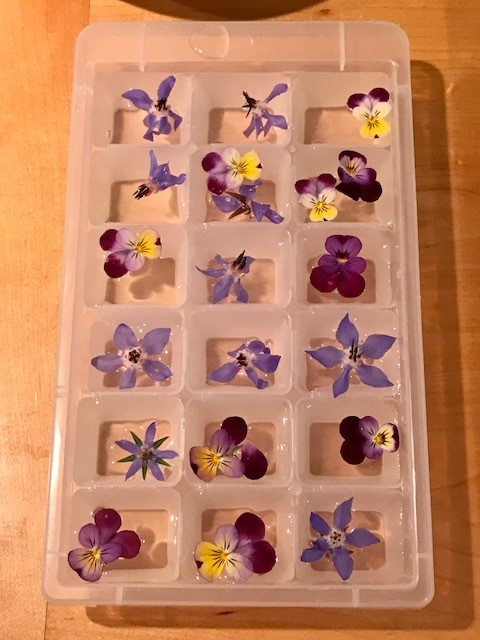Walk into my kitchen and you'll smell the pungent scents of savory edible flowers like dill, fennel, society garlic, nasturtium, sage, rosemary, and oregano drying on a tray screen. Beside them sits an array of sweet edible flowers; violas, dianthus, roses, the brilliant blue stars of borage, lemon verbena, hollyhocks, lavender, and roselle, a hibiscus that makes glorious, red tea.
For the past few decades I have cooked and created with the edible flowers flourishing in my garden, but gardener-chefs beware, just because they're flowers doesn't mean they're all edible! Check the long list put out by North Carolina State Extension before you even take a nibble of one. I use only those that I gather in my garden. If you don't have edible flowers in your garden and would like to try them as a food ingredient, North Carolina State Extension recommends “flowers purchased from a florist, garden center or nursery should be specifically labeled as edible; otherwise, they may have been treated with ornamental pesticides that are unsafe for use on food crops.”
Cooking with flowers isn't anything new. Some herbal and garden books in my library are nearly 200 years old, and they include “receipts” for using flowers in everything from medicine to candy. I've included flowers in the making of homemade ice cream, custards, rice dishes, as toppings on cakes, in drinks, salads, cheeses, frozen in ice cubes, and so much more. In fact, my husband once told me he was afraid to linger in our kitchen for fear I would sprinkle him with my floral concoctions!
In the middle of a winter storm, reach into your cupboard and pull out some of your colorful, tasty, bits of summer sunshine to top a salad or a soup. You'll be glad you took the time to preserve them.
Some Helpful Hints:
Collect your flowers early in the morning, rinse with cool water, spread them out on a towel and pat them dry.
If you're using flowers the day they're picked, just let them float in a shallow saucer or ice cube tray of water. They'll stay plump and fresh till you need them.
To dry the flowers, spread them onto a parchment paper lined tray or screen out of direct sunlight. When thoroughly dry (they'll feel like tissue paper), store them in a labeled tin or a jar in a cool, dark area.



